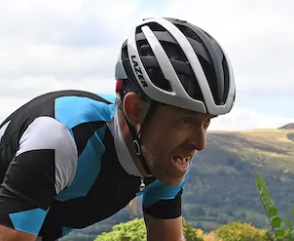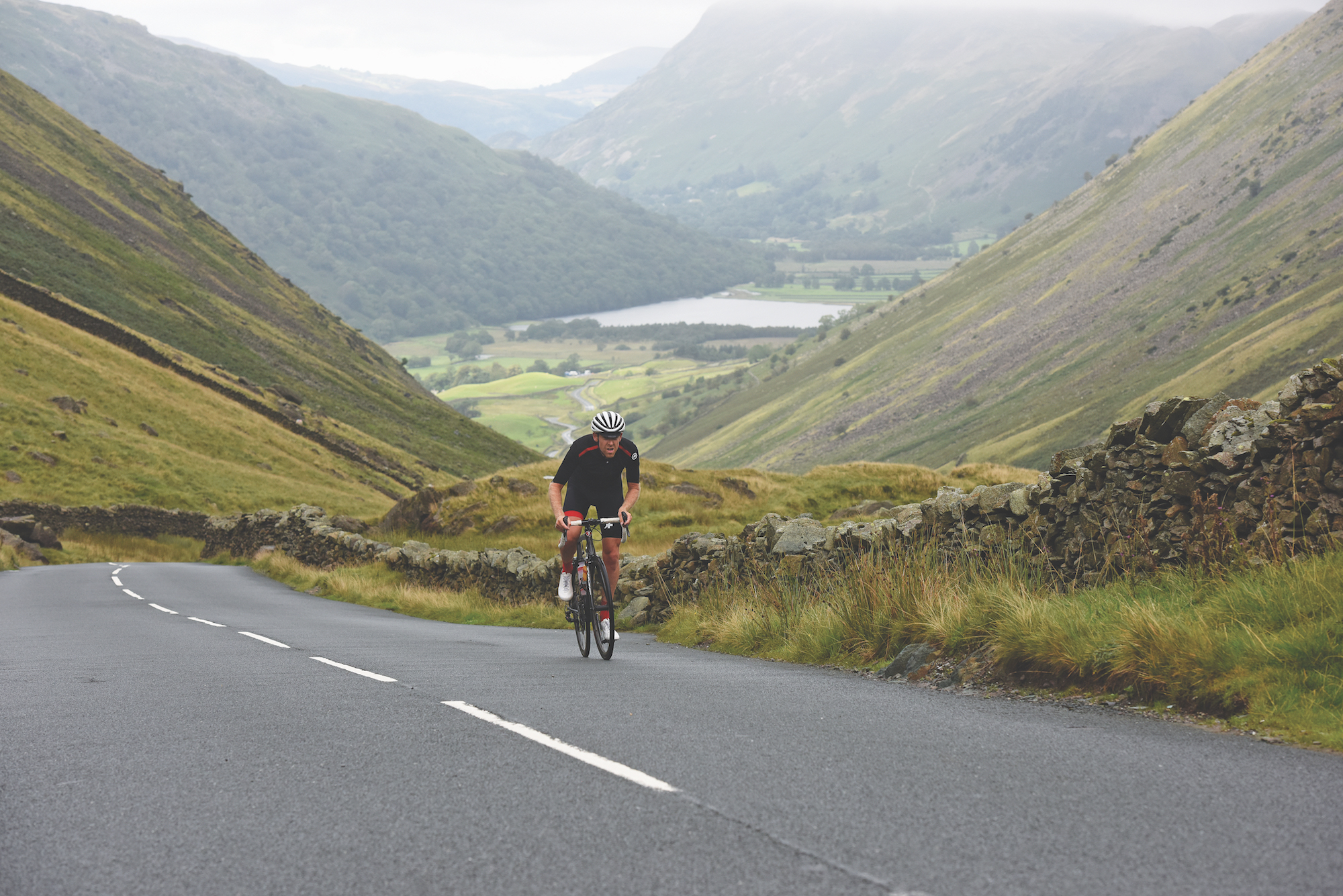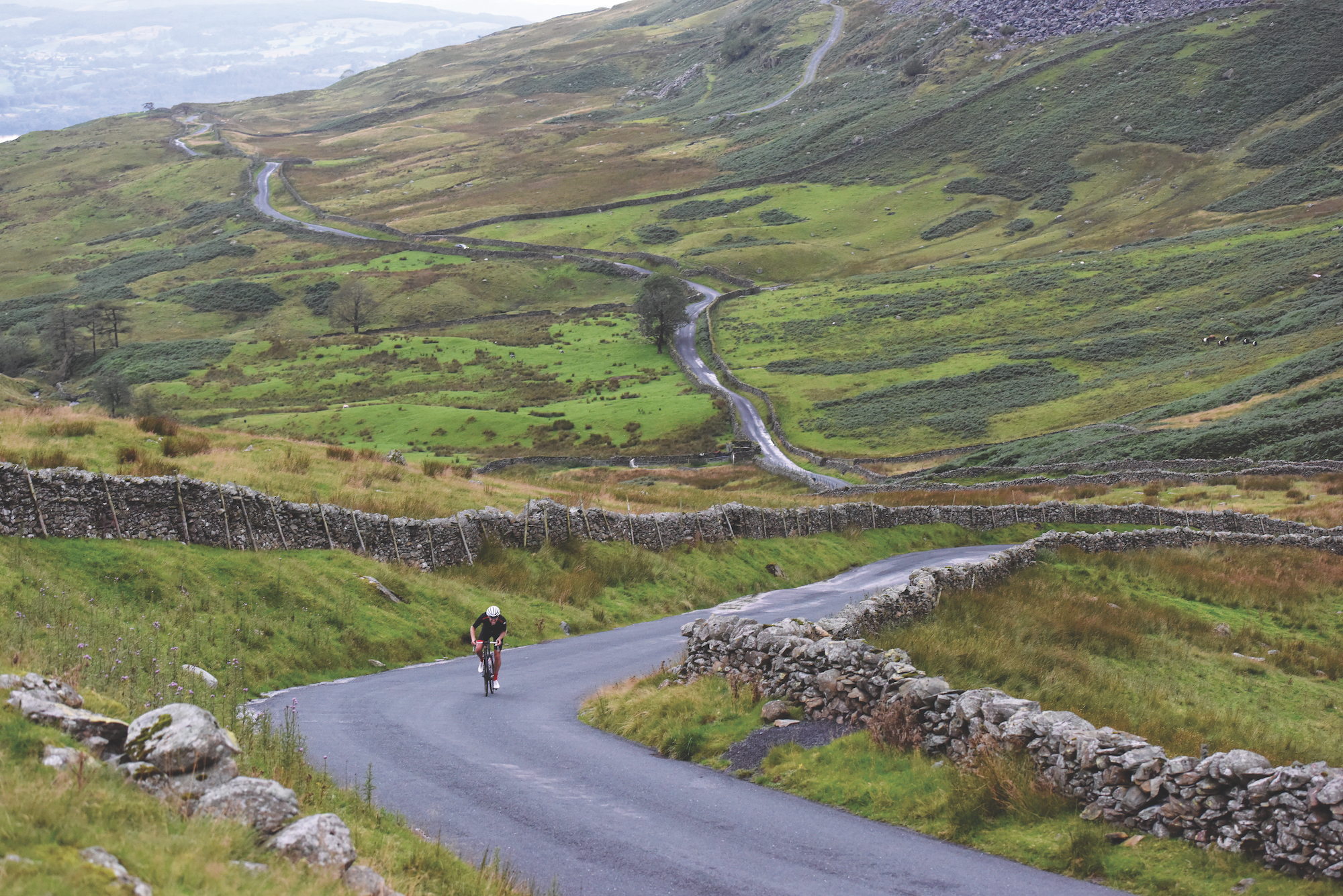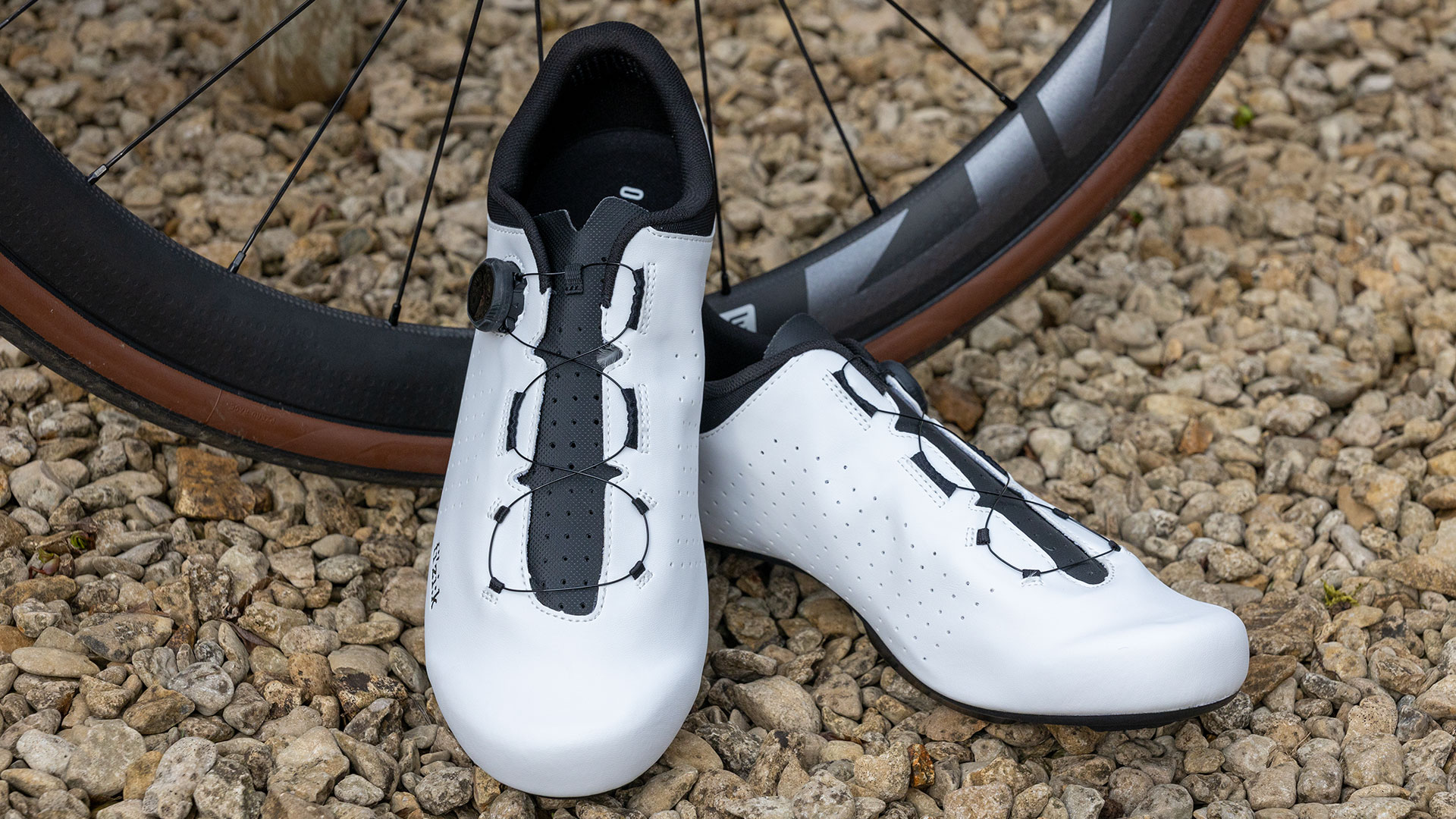What happens if you ask Cycling Weekly readers to send in their hardest 100km rides? We found out
Simon Warren accepts two 100km hilly challenges from fiendish CW readers

Andy Jones

There appear to be many origins for the saying ‘make a rod for your own back’, many of which involve some sort of chastisement or corporal punishment.
One account suggests that when a child was to be punished by his or her father they would be allowed to choose the ‘rod’ (an item typically used for beating the ass of cattle) before it was used to hit them. The idea being not to choose a really big one as it would hurt more.
Through time this scenario has simply come to mean ‘don’t put yourself in a situation that will bring you trouble in the future’.
For example: Don’t suggest to the readership of Cycling Weekly that they send in their ideas for the hardest 100-kilometre ride in the country and then offer to go and ride it.
>>> ‘I’ve just kept going’: Meet 82-year-old Russ Mantle, the one million mile man
After my initial attempt to find the most arduous 100 kilometres of British roads was published and the gauntlet to find a harder one laid down, further suggestions did indeed flood in. As it was my foolish idea, CW kindly offered me first pick and after careful deliberation I singled out the route sent in by Garry Lindsay.
Set in the Lake District and featuring such beasts as The Struggle, Kirkstone Pass, Birker Fell, Hardnott and Wrynose passes to name a few, it looked like a brutal test.
Get The Leadout Newsletter
The latest race content, interviews, features, reviews and expert buying guides, direct to your inbox!
I had considered heading to the Lakes for my initial attempt but settled on the North York Moors because I presumed the close proximity and severity of its vicious little climbs would give me more elevation and make for a tougher ride. I was wrong.
Thanks to immaculate plotting and while sticking to the three rules of starting and finishing from the same point, not using any hill twice and keeping the distance under 100km, Garry had managed to devise a route that climbs a whopping 2,688 metres. Incorporating a total of 10 gruelling ascents, this was indeed going to be a serious test. I couldn’t wait to get going.
The start and finish point is the small car park at the head of Brothers Water, which unfortunately lacks any amenities, so make sure your car is filled with your favourite snacks ready for your return. You could, if you wanted, start and finish in Ambleside.
This would require a U-turn at the car park mentioned and slightly alter the balance of the ride but would make life a little more convenient. I, however, am following Garry’s route to the letter and rolling out, got stuck into what is, by my calculation, just 1.2 kilometres of flat before the proper climbing starts, so make the most of this ‘warm-up’.
Hilly savage

The first ascent on the menu is the mighty Kirkstone Pass, the hard side, which is 5.2 kilometres of solid climbing with maximum gradients of 20 per cent towards the summit.
To make matters worse there was a pounding headwind laced with a generous amount of fine rain, which wasn’t ideal but was a perfectly typical welcome to the Lake District. Weaving between the stone walls, through the landscape peppered with giant boulders, progress was painfully slow but eventually the famous Kirkstone Inn was reached.
There are a few breaks in the bombardment of giant ascents, the first of which comes with the descent of The Struggle and negotiation of the tourist-trapped Ambleside. If you manage to avoid getting knocked off by the meandering, outdoor-equipped hordes, the next part of the route takes you over to Coniston via the relatively tame Hawkshead Hill.
This climb, the easiest of the 10 peaks, ebbs and flows through the twisting back lanes without causing much pain, before falling to the shores of Coniston Water. Make the most of these next few kilometres, because when they end all hell breaks loose.
You’ll spot your next foe well before you arrive at its base and it’s a menacing sight as the 20 per cent slopes ramp up abruptly from the A593. The switch from rolling main road to savage gradients is immediate, and as if you have released a giant parachute behind you, you’ll be furiously changing down the sprockets until you can click no further. Rising arrow-straight then weaving a little, The Old Rake will quickly remind you what the day is all about — nasty hills on wicked gradients. The upper slopes are easier and the views out over Duddon Sands fantastic as you race back down through tiny, dirty lanes into Broughton Mills and directly to the base of your next target, Kiln Bank Cross.
This is the ‘easy’ side of this climb which ramps up, punctuated by a gate into some of the most beautiful scenery in the Lakes. It’s not all hard work and lung-busting climbs remember, you are also here to immerse yourself in arguably the finest vistas in the country and there are few views better than those on the following climb, Birker Fell.
It’s been a favourite of mine since I first visited one cold February morning a few years back. On that day the high peaks of Scarfell Pike and Bow Fell in the distance were covered in a light dusting of snow and it was simply sublime.
Today, the route tackles the fell south to north and although it’s an easier ascent compared to the other way, it starts with a series of vicious 20 per cent switchbacks before the more steady inclines that allow you to soak up the colossal scenery.
Once the route descends Birker Fell it’s time for the intensity to increase some more and arriving in Eskdale Green, as anyone who has found themselves here knows, what lies ahead is the king of all English climbs, Hardknott pass. There is no turning round, no other way out —once you ride into Eskdale at the end you come face-to-face with a foe like no other.
At first sight it looks all but impossible, it should never had been built and as I’ve said time and again, if you can get over this, you can get over anything. Almost every time I’ve ridden Hardknott it’s been as part of the Fred Whitton sportive with 150 kilometres in the legs, and it is just a matter of getting over it without cramp taking hold.
Today, with only 60 kilometres in them, it is a different beast. I had left the 39 ring on the front in anticipation of this and still managed to beat its 33 per cent hairpins. Take that Hardknott! I’m not going to say it was a doddle, but being that bit fresher makes a world of difference.
Heading east, Hardknott is followed by its partner in crime Wrynose, just as spectacular but kinder on the legs, with maximum gradients of ‘only’ 25 per cent. Passing through the exquisite Wrynose Valley, you also have plenty of time to get ready for the onslaught ahead. With these twin beasts slain, psychologically you have one foot at the finish.
Beware though, as this route throws three more punches that will have you on the ropes, if not the canvas. Immediately after the tricky descent off Wrynose you turn left to tackle the back route up to Blae Tarn. I was now getting tired legs and with 28 kilometres to go, I already knew Garry’s route was tougher than the one I plotted in Yorkshire.
It’s not just the climbing that sets it apart, the descents are more technical, the roads narrower and the undulations almost constant. It requires total concentration with serious grunt.
Over the brow of Blae Tarn you’re treated to amazing views over Langdale Fell. A perfect valley stretches into the distance as you descend through luscious hairpins onto the fast road to Chapel Stile and climb number nine, Red Bank.
This is a beautiful road and one that’s often overlooked in favour of its giant neighbours. It kicks up rapidly via a 25 per cent hairpin through the rocky landscape and tall bracken to the summit at the youth hostel.
Grim struggle

The run from Grassmere to Ambleside on the busy main road cuts out a couple of kilometres and gains an extra few metres of elevation, a double win.
Through Ambleside and it’s time to gather yourself for the finale, to retrace the initial part of the ride and return to the point you started. As I’d set off quite late in the day, the light was beginning to fade and as I passed the warm orange glow emanating from the Golden Rule Inn, I’d much rather have been inside with a beer than facing what lay ahead.
The Struggle is a monster road and the climbing begins directly on the exit of Ambleside. I always picture the hairpins at the top and forget how hard the lower slopes are and how long they go on for.
I was pretty empty now, my pace had dropped and I crawled through the gloom to crest the brow that marks the end of the first part of the climb. Following this, you are offered the respite of some shallower slopes, then a slight descent, but this is small consolation because in front of your eyes, taunting you, sit those final, leg-destroying hairpins.
With over 2,500 metres of elevation already climbed, the final metres are the toughest of them all, as you fight upwards to the sanctuary of the Kirkstone Inn. Adorned with fading graffiti from the Tour of Britain’s visit in 2016, where Bradley Wiggins entertained the crowd by getting off and walking, are a fitting finale to a truly punishing 100km. There’s a scary descent off the Kirkstone Pass, but the climbing is over and it’s only another 1.2 km to the car park.
Statistically, Garry’s route adds just 80 extra metres of elevation compared to my Yorkshire ride. The actual challenge is far greater. There are no gifts when riding in the Lakes, you have to earn every metre you climb and every kilometre you cover and for this reason, this could very well be the hardest 100-kilometre ride in the land.

Thank you for reading 20 articles this month* Join now for unlimited access
Enjoy your first month for just £1 / $1 / €1
*Read 5 free articles per month without a subscription

Join now for unlimited access
Try first month for just £1 / $1 / €1
Simon has been riding for over 30 years and has a long connection with Cycling Weekly, he was once a designer on the magazine and has been a regular contributor for many years. Arguably, though, he is best known as the author of Cycling Climbs series of books. Staring with 100 Greatest Cycling Climbs in 2010, Simon has set out to chronicle and, of course, ride the toughest cycling climbs across the UK and Europe. Since that first book, he's added 11 more, as well Ride Britain which showcases 40 inspirational road cycling routes. Based in Sheffield, Yorkshire, Simon continues to keep riding his bike uphill and guides rides, hosts events and gives talks on climbing hills on bikes!
-
 Man hands himself in to Belgian police after throwing full water bottle at Mathieu van der Poel during Paris-Roubaix
Man hands himself in to Belgian police after throwing full water bottle at Mathieu van der Poel during Paris-Roubaix30-year-old was on Templeuve-en-Pévèle cobbled sector when television pictures showed the bottle hitting him in the face
By Tom Thewlis Published
-
 Fizik Vento Omna Wide shoe review: Yeti sneakers for those pedalling on a budget
Fizik Vento Omna Wide shoe review: Yeti sneakers for those pedalling on a budgetBroadly recommended for those of us with flipper feet
By Simon Fellows Published